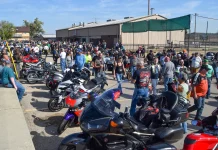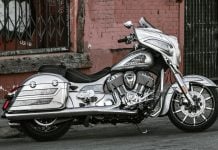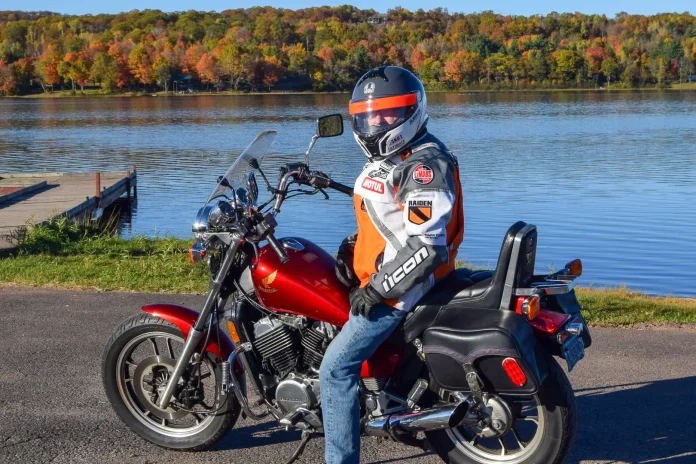
It’s hard to believe that 1985 happened 40 years ago. It’s even harder to admit that, by that time, I had already been a motorcyclist for more than ten years. Many motorcycle experts and historians believe that the 1980s were a golden age of innovative motorcycle design. It’s true that there were a lot of great bikes in that era, and 1985 was smack-dab in the middle of that decade. I have a couple of bikes in my shed from that special year—the Honda Magna V40 (VF700C) and Shadow 500 (VT500C).
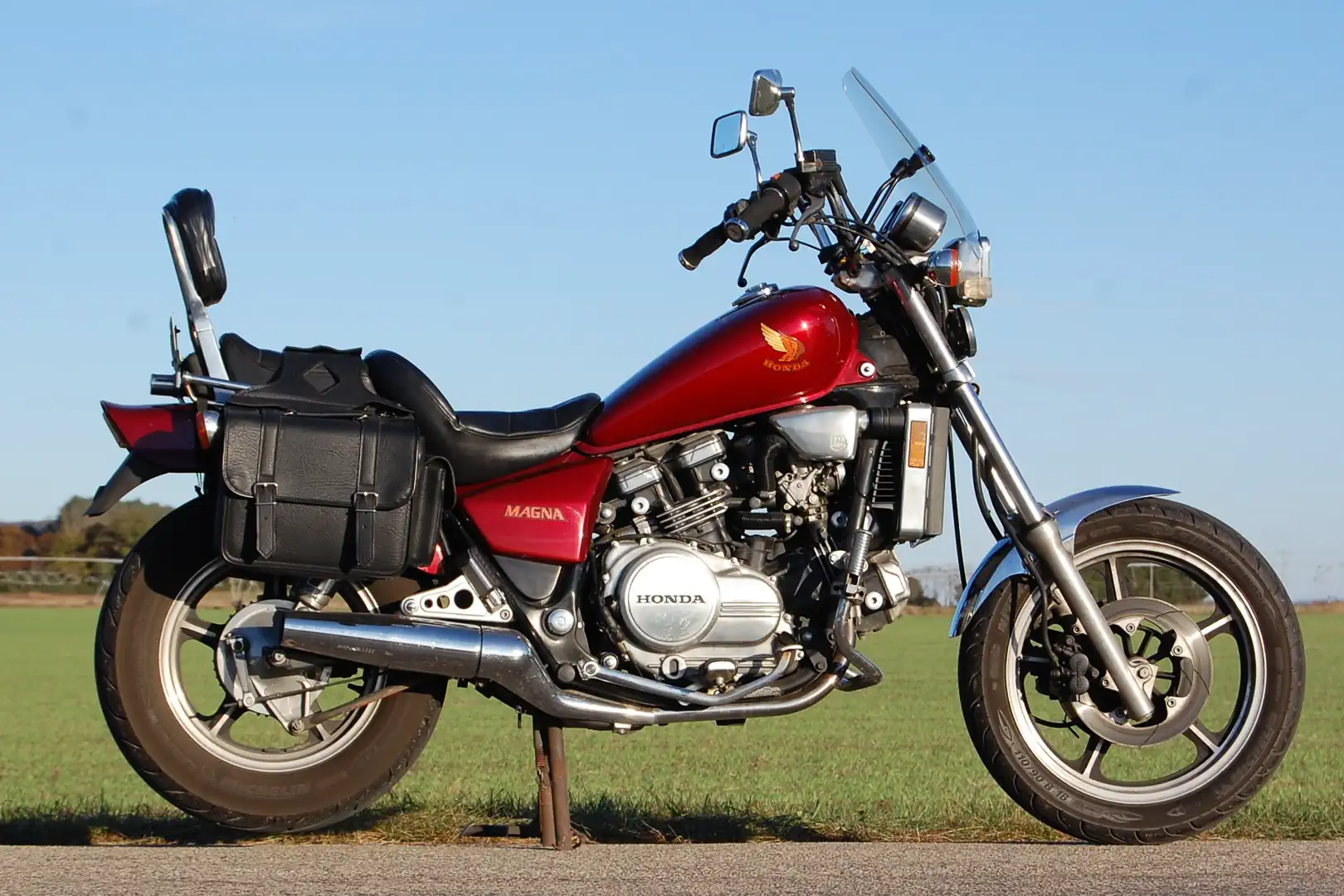
Rolled out in 1983, the Shadow 500 is a V-twin cruiser with several notable and attractive differences from many of its contemporary V-twin options. The liquid-cooled SOHC V-twin engine was something of a departure from standard practice, with its 52-degree V, rather than the more common 45, 60, or 90 degrees.
Unlike the common crankpin used in the later Honda Shadow 1100 and other metric cruisers, the Shadow 500 used an offset dual crankpin crankshaft to reduce vibration. It had three valves per cylinder, and the electronic ignition fired dual spark plugs in each cylinder. The liquid-cooled barrels had cooling fins cast in to mimic the appearance of a classic air-cooled V-twin. Dual carburetors handled the fuel delivery.
The 1985 Shadow 500 had clean styling with moderate-rise handlebars, a one-piece stepped saddle that flowed seamlessly into a backrest and included a lockable compartment, and two-into-two chromed exhaust. Add in a low-maintenance shaft final drive, cast aluminum wheels, and moderately kicked-out forks, and you have a very comfortable ride. Additionally, it was lightweight, weighing in at only 443 pounds dry, although we can’t specify what “dry” meant.
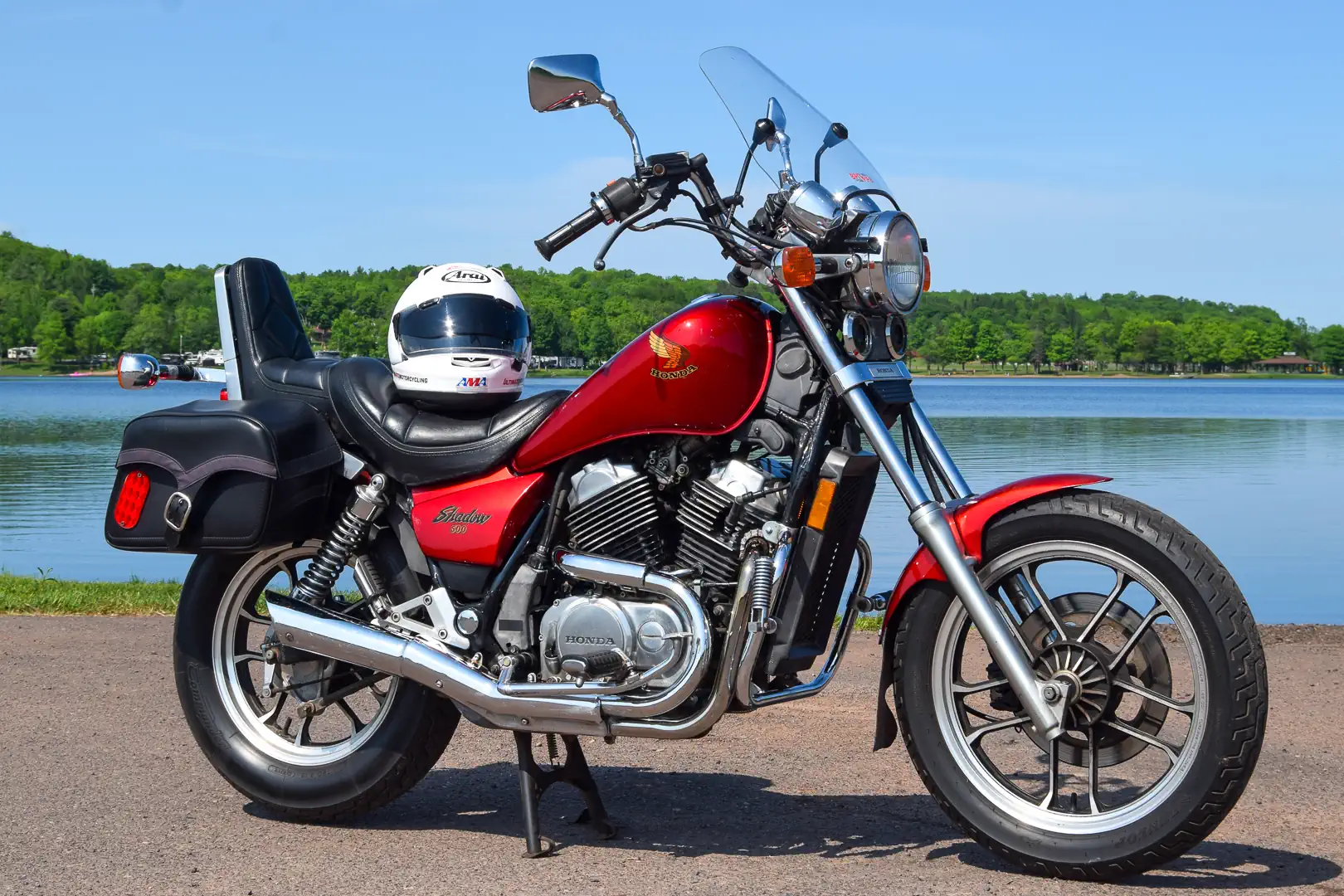
Economically priced and inexpensive to insure, it was also below the displacement range affected by the import bike targeted tariff law then in effect. At the time, Harley-Davidson was facing financial struggles, having just capitalized the buy-back from AMF. The Motor Company was facing stiff competition from imported bikes in its traditional large-displacement market.
In 1982, Harley-Davidson CEO Vaughn Beals petitioned the International Trade Commission (ITC) for relief from what he claimed was unfair foreign competition, known as “dumping.” The petition sought protection in the form of a tariff on heavyweight motorcycles (700cc and above).
In January 1983, the ITC agreed with Beals and ruled that the importation of heavyweight motorcycles posed a threat to the domestic U.S. motorcycle industry. The ITC recommended that President Reagan act to raise the then-current import tariff of 4.4 percent to 49.4 percent, lowering the rate to 39.4 percent the following year, 24.4 percent in the third year, 19.4 percent in the fourth year, and to 14.4 percent in the fifth year. After that, the tariff returned to 4.4 percent. In April 1983, Reagan signed a version of the tariff plan that focused almost entirely on Japanese manufacturers.
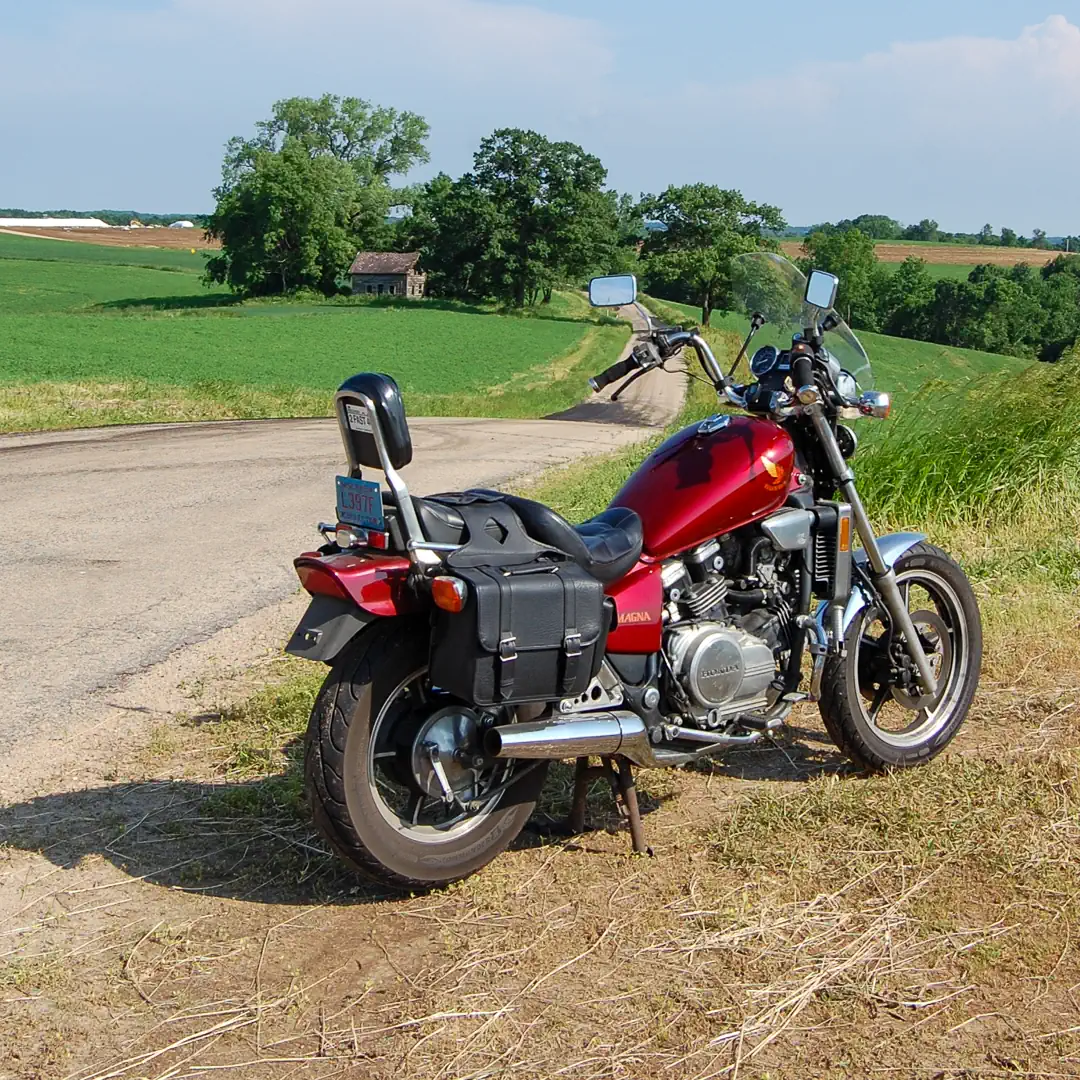
The tariff plan made bikes like Honda’s potent V45 and V65 V4-powered bikes much more expensive. Honda responded by reducing the displacement of the V45 from the pre-tariff 745cc to 694cc, effectively creating a de facto limited-edition V40, which utilized a 694cc engine from 1984 to 1987 and thereby avoided the tariff. As if to say, “in your face,” Honda tweaked the tuning so the new 700 has three more horsepower than the 79-horsepower 750 it replaced.
Despite the onerous tariff—sounds surprisingly like current events, doesn’t it?—imported motorcycles were still enjoying a lot of popularity in the U.S. in 1985.
Speaking of prices, the 1985 Honda Shadow 500 had an MSRP of $2698, with the V40 Magna running $450 more. In 2025 prices, that’s about $7600 for the Shadow and $8900 for the V40. Their equivalents in 2025 cost less after adjusting for inflation, as a 2025 Honda Rebel 500 can be had for $6499 and the Shadow 750 Phantom for $8699.
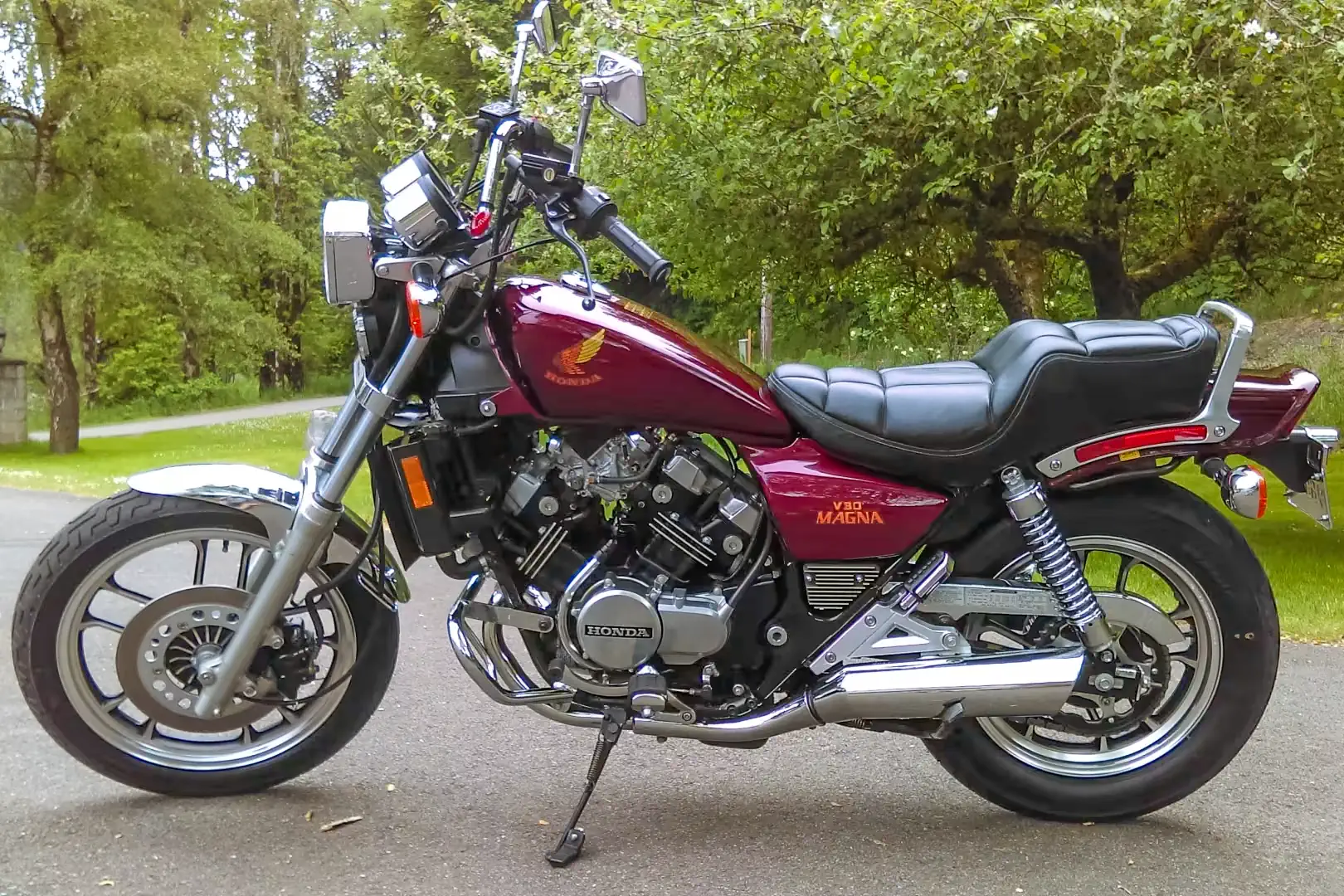
Having owned the V40 Magna for 17 years and the Shadow 500 for eight years, I’ve had plenty of ride time on them. In those years, the Shadow 500 has required only routine maintenance. On the V40 Magna, other than routine maintenance, I did replace the seals in the hydraulic clutch actuator 11 years ago, and it has been good to go ever since.
The V40 Magna weighs about 92 pounds more than the Shadow 500, making parking the big guy a little more difficult than with his little brother. However, the V40’s seat height is about an inch lower than the Shadow’s. This helps me, being on the short-legged side, with sure footing and better leverage when positioning the bike while in the saddle.
Contrary to what I had expected, the little V-twin really is smooth at nearly all operating speeds thanks to the offset dual crankpin crankshaft. While it is not quite as smooth as the V40 Magna, it is significantly smoother than many other V-twins I’ve ridden—impressive for a motor lacking a counterbalancer.
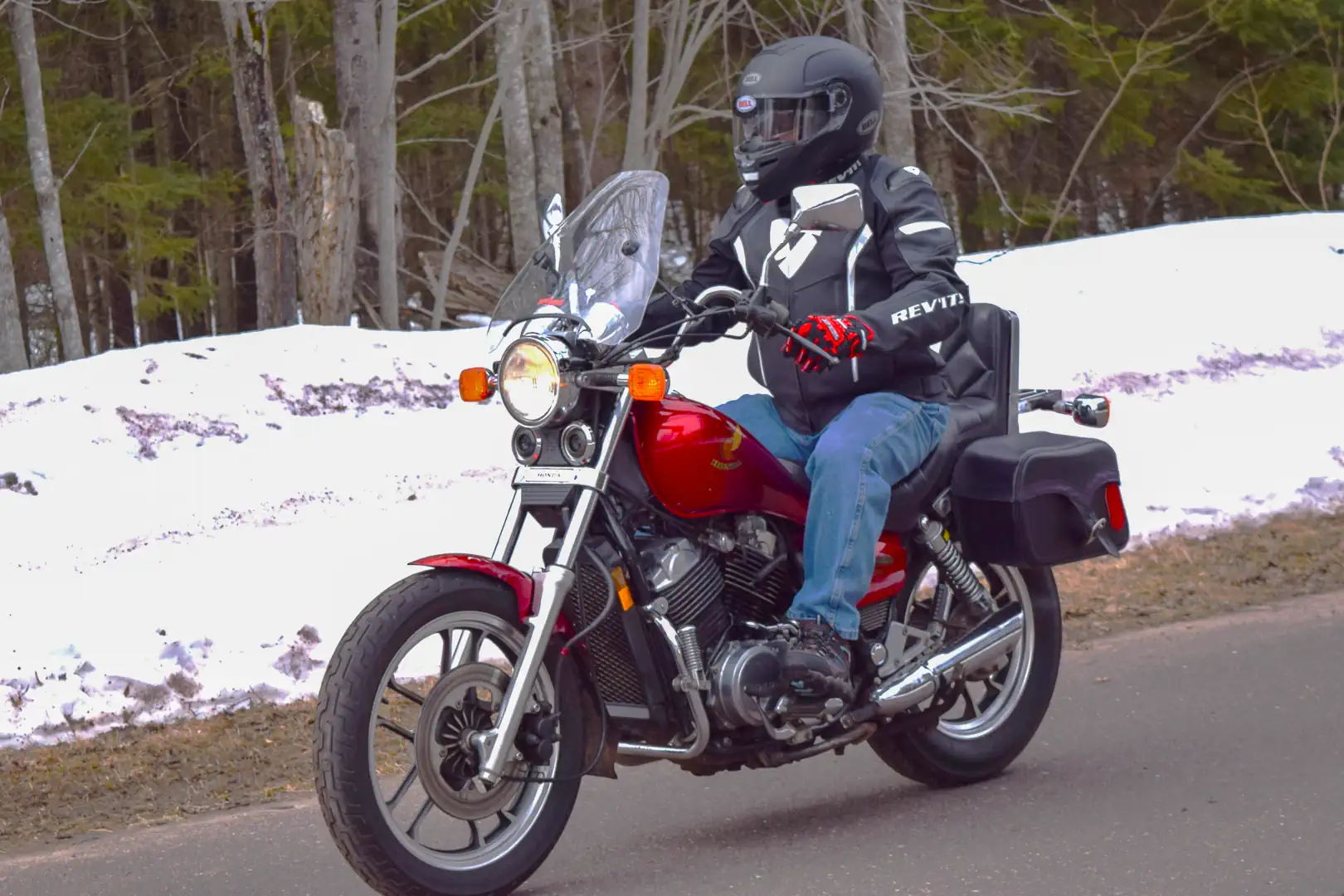
Of course, out on the Interstate, the Shadow 500 is working a little harder than the V40 Magna, due to the 32-horsepower difference. That said, 70 mph is still a breeze for both bikes, and vibration-related fatigue through the grips, seats, and footpegs is not a factor with either.
Much as the V40 Magna is at home at high speed on the Interstate, its superb handling at all speeds and all-day comfort in the saddle make it one of my favorite bikes for rambling around on southern Wisconsin’s back roads.
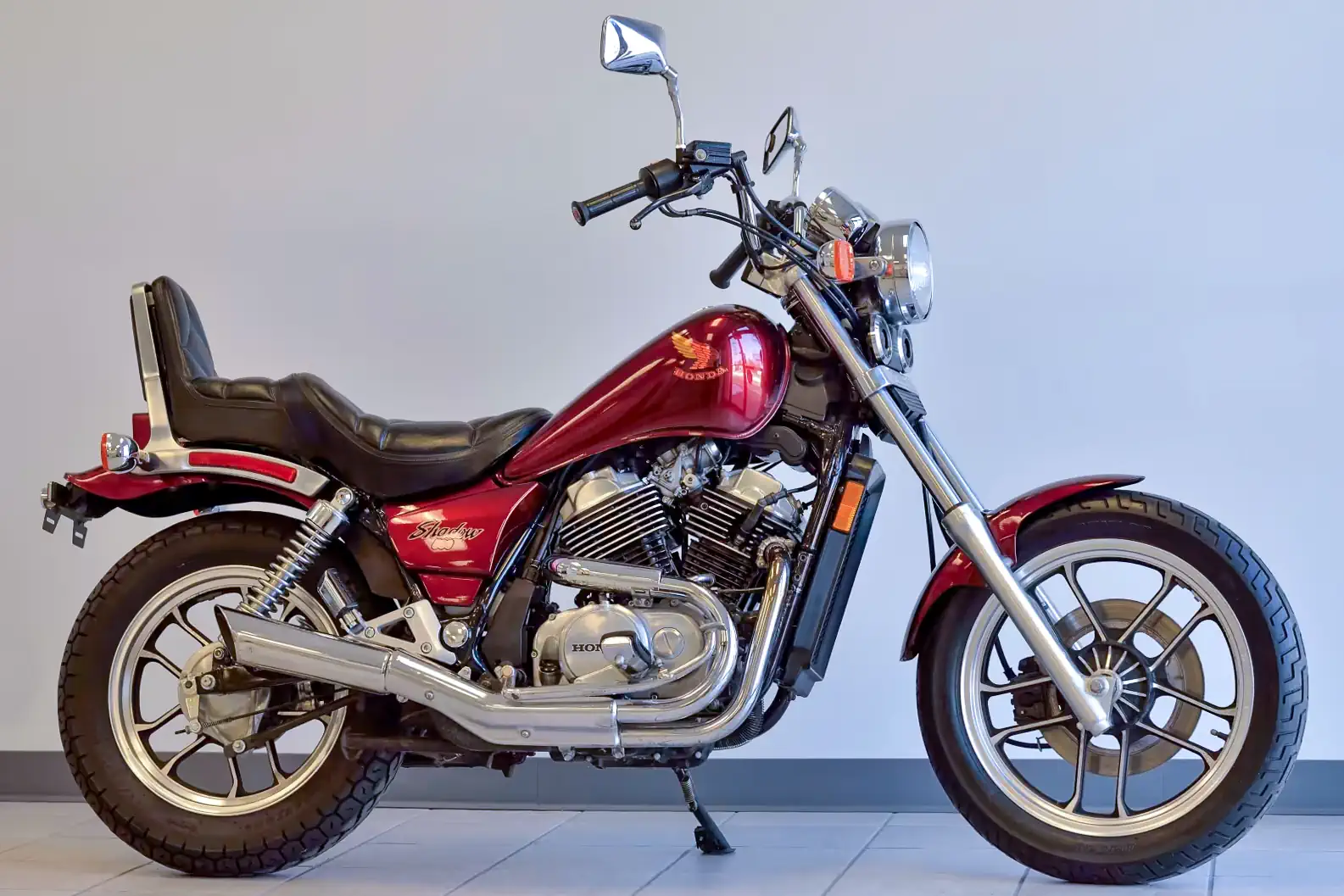
The stepped, two-piece saddle, moderate-rise handlebar, mid-ship footpegs, and additional freeway pegs on the engine guard combine to create a very comfortable ride, with ergonomics similar to those of the Shadow. Both bikes have handlebar-mounted Spitfire windscreens, saddlebags, and crash bars added.
For long-range Interstate highway work, the 1985 Honda V40 Magna is the obvious machine of choice. However, for day trips, the Shadow 500 is a great alternative. The truth is, they are both pretty great rides, even after 40 years!
| Specs | 1985 Honda Shadow 500 | 1985 Honda V40 Magna |
| Engine | 52° V-twin, SOHC, 3 vpc, offset dual crankpin | 90° V4, DOHC, 4 vpc |
| Maximum power | 50 horsepower @ 9000 rpm | 82 horsepower @ 9500 rpm |
| Torque (claimed) | 31 lb-ft @ 7000 rpm | 46 lb-ft @ 7500 rpm |
| Comp. ratio | 10.5:1 | 10.5:1 |
| Fueling | Twin carbs | 4 carbs |
| Ignition | Electronic; 2 spark plugs per cylinder | Electronic, one spark plug per cylinder |
| Exhaust | 2-into-2 | 4-into-2 |
| Cooling | Liquid | Liquid |
| Transmission | 6-speed | 6-speed |
| Final drive | Shaft | Shaft |
| Front suspension | Traditional w/ air assist | Traditional w/ air assist and TRAC |
| Rear suspension | Twin shock | Twin shock |
| Front brake | Single disc | 2 discs |
| Rear brake | Drum | Drum |
| Wheelbase | 58.6 inches | 61.6 inches |
| Seat height | 31 inches | 29.1 inches |
| Dry weight | 443 pounds | 535 pounds |
| 1985 price | $2698 MSRP | $3148 MSRP |
| Price in 2025 $ | $7600 | $8900 |


